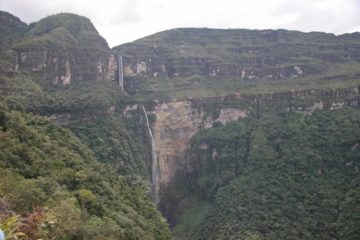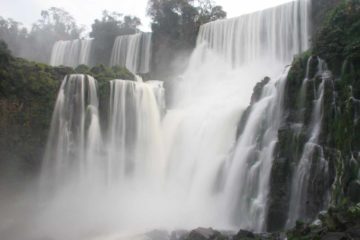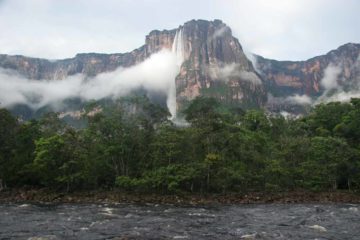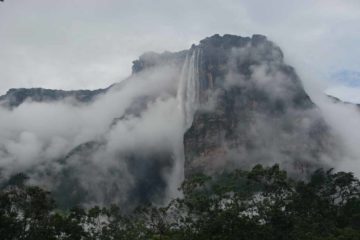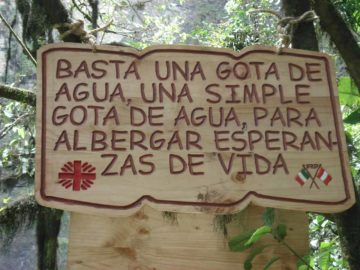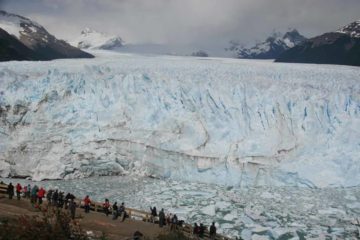About Catarata Gocta (“Gocta Falls”)
Catarata Gocta was perhaps the most impressive waterfall in all of Peru. This waterfall was said to be “discovered” by westerners in 2005 when Stefan Ziemendorff (I must’ve misheard our guide because I thought he said Stefan Millandorf) noticed the waterfall during an archaeological expedition. In the following year, he was part of a follow-up expedition that measured the total height of the waterfall at 771m consisting of an upper leap of 230m and a lower leap of 541m.
We won’t get into details about whether this was the 3rd tallest or 5th tallest or 14th tallest waterfall in the world when there’s no consensus on a consistent definition of a waterfall. By the way, our guide mentioned that the name of the waterfall was derived from the sound that resident monkeys made. We don’t know if that’s true, but it was a memorable little tid bit.
Given the obscurity of this waterfall until its accidental find by the Ziemendorff expedition, there was quite a bit of fanfare and publicity involving Gocta. Yet despite such press, our experience with the falls still felt as if the area was far from overrun by mass tourism, especially when compared to Machu Picchu. I’m sure it must’ve been far more difficult to access it in the past, and the tourism infrastructure (which was still a work in progress during our visit) was definitely welcome in terms of making the falls even more accessible.
We were able to experience this waterfall in two different ways. The first way involved hiking to the base of the upper waterfall. The second way involved hiking to the base of the lower waterfall. We’ll describe these excursions separately since each a trek that was best done as a full day excursion.
[tabby] [tabby title=”Upper Waterfall”]
For the first 2 hours, the trail generally proceeded uphill with a few steeper sections along the way. All this consistent climbing was a bit taxing, but since we were mostly on a wide ledge overlooking Cocachimba and the valley through which Catarata Gocta’s stream flowed, we were treated to attractive panoramas. Our guide even pointed out the general area where the Ziemendorff expedition took place and from where he managed to spot this waterfall.
Along this initial couple of hours, we made it to a short detour that climbed steeply up to a cave containing some rock art, which added to the ancient feel of this place. Further along the trail, we were able to look across the valley towards an attractive side waterfall called Catarata de Golondrina.
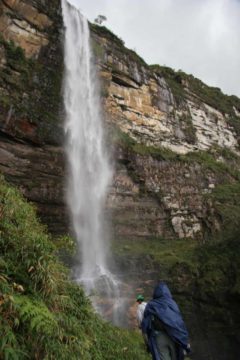
Beyond the overlook (probably another hour later), our hike crossed over part of the Chorro Negro waterfall. The trail continued to proceed through even more dense jungle before it ultimately led us to the bottom of the Upper Catarata Gocta.
During our April 2008 visit, there were lots of ladders that we had to climb on in order to get right up to the base of that upper waterfall. We saw some trail work that was going on so I’d imagine future visitors should have less trouble than we had negotiating this steep part of the hike.
The base of the upper waterfall at the end of the trail was pretty misty and muddy. It didn’t yield greatest of photos, but the cool spray was a welcome relief from all the strenuous hiking it took to get here.
Overall, the whole out-and-back hike took us about 7 hours including a few breaks here and there.
[tabby title=”Lower Waterfall”]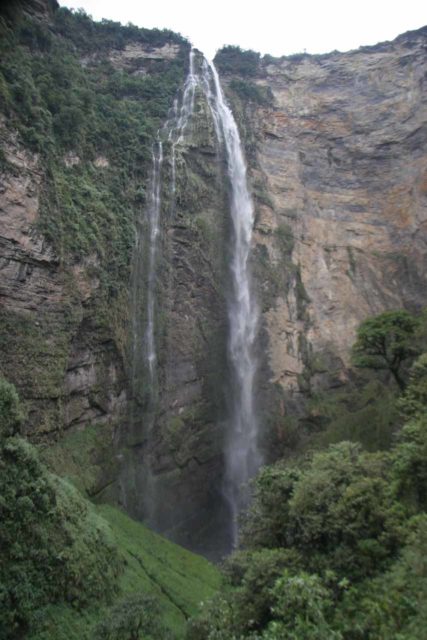
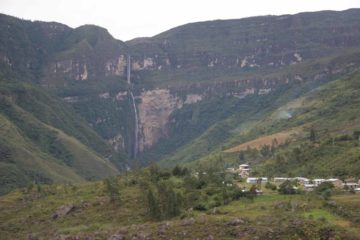
Once we were at the village of Cocachimba, there were multilingual signs (though most were still in Spanish) that pointed the way to the trail leading to Catarata Gocta. The trail to the falls immediately left the backside of the village, which itself only consisted of a few homes and a public building here and there.
We actually spent a night here in one of these buildings so we experienced firsthand how there was limited heat (think cold shower) and no electricity.
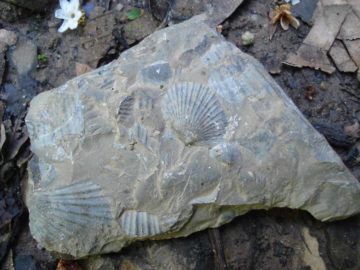
During our trip, the swinging bridge over the Golondrina stream wasn’t complete so we had to climb down the steep embankment and cross the stream before climbing back up the other side of the embankment.
While the hike was also pretty strenuous and long, we did enjoy the fact that much of the trail harbored rocks containing shell-like fossils. That indicated to us that this area must have been part of an ancient sea possibly millions of years ago. Julie and I were a bit concerned that we were encouraged to take the fossils as souvenirs because we knew that if everyone did that, there wouldn’t be any of them left.
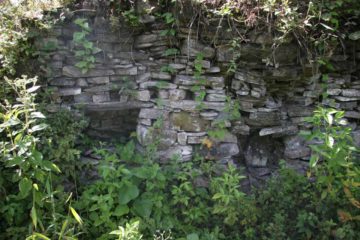
Anyhow, at about 3 hours into the hike, we finally reached the base of the waterfall where we were close enough that we could only see the lower waterfall as the upper waterfall was concealed by the tall cliff in front of us. During our visit, this lower waterfall segmented and took on an appearance that reminded me a lot like Shine Falls. The mesmerizing motion of the water almost gave us the illusion like the water was coming down in slow motion given its somewhat wispy nature.
Like the upper waterfall, the overall amount of time we spent on this round trip excursion was also 7 hours.
[tabbyending]Related Top 10 Lists
Trip Planning Resources
Nearby Accommodations
This content is for members only. See Membership Options.Featured Images and Nearby Attractions
This content is for members only. See Membership Options.Visitor Comments:
Got something you'd like to share or say to keep the conversation going? Feel free to leave a comment below...No users have replied to the content on this page
Visitor Reviews of this Waterfall:
If you have a waterfall story or write-up that you'd like to share, feel free to click the button below and fill out the form...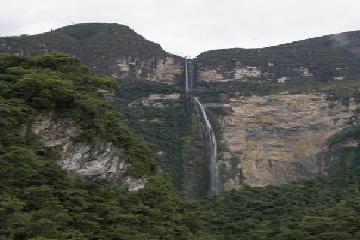 Impressive due to its height (Gocta) February 12, 2014 11:04 am - From a distance, Gocta waterfall seemed, well, pretty but quite average. During the nice hike in comfortable warm temperature, the waterfall grew bigger and bigger. At a certain point I've been impressed due to its height (look at the photos and compare one of the tall trees to the waterfall). Later, I could not see… ...Read More
Impressive due to its height (Gocta) February 12, 2014 11:04 am - From a distance, Gocta waterfall seemed, well, pretty but quite average. During the nice hike in comfortable warm temperature, the waterfall grew bigger and bigger. At a certain point I've been impressed due to its height (look at the photos and compare one of the tall trees to the waterfall). Later, I could not see… ...Read More
